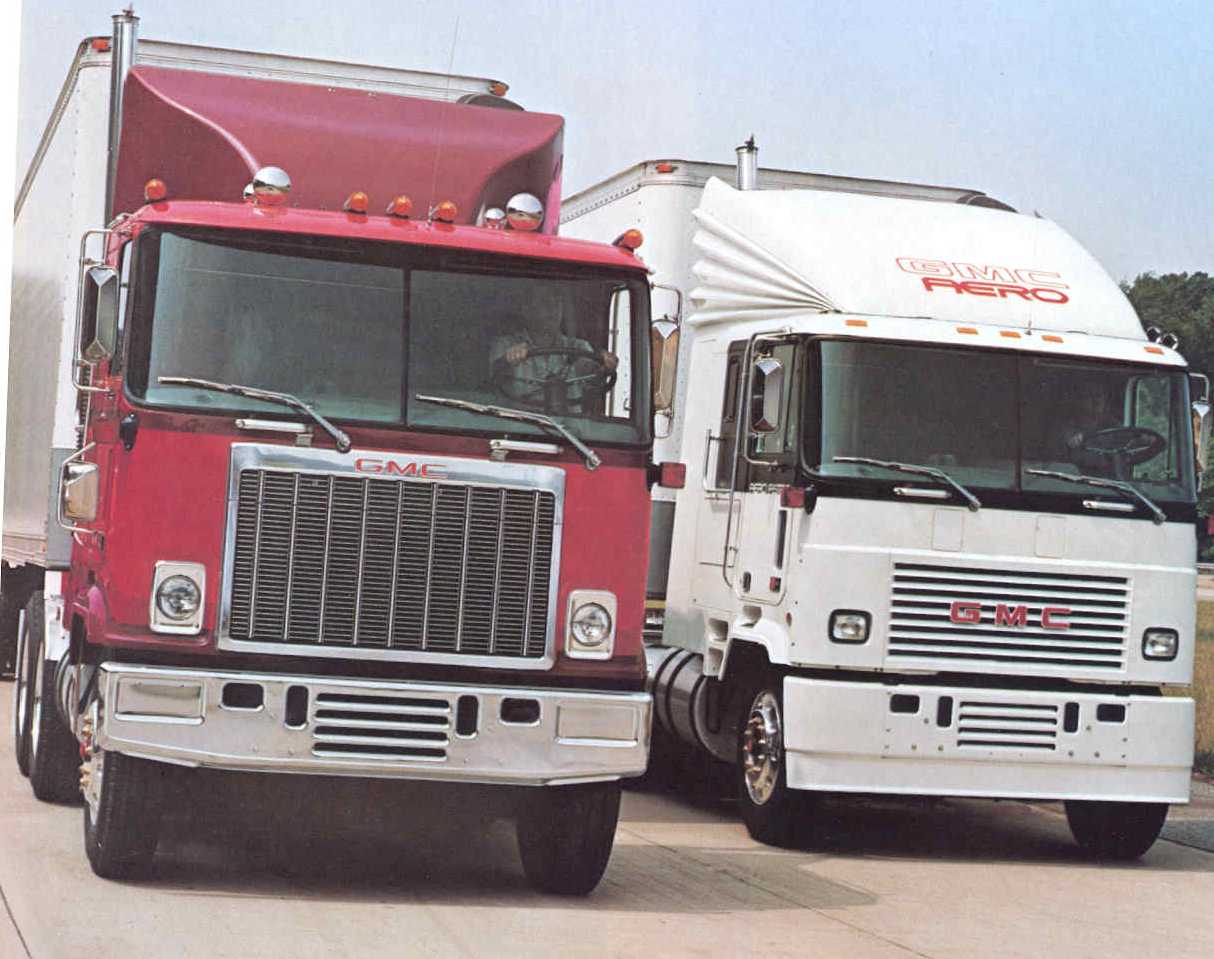

![]()
The Aero Astro was an optional package for Astros, introduced in the early 80s (82-4, I believe), and was GMC's response to many owners and operators questions and concerns: fuel economy.
Why deck out a truck like this? Well, as many know, the better aerodynamics a vehicle has, the easier it can travel, and it has less resistance. Less Resistance means the less the engine has to work, thus making a rise in fuel economy. If you look at the Astro wind tunnel testing from 1968(below) you see the Astro with out the Dragfoiler has wind trapped between the truck and the trailer, causing resistance. To maintain a good speed, your engine had to work overtime to overcome the resistance. However, the Dragfoiler eliminated that, letting your engine work easier, and get better gas mileage. The Aero Astro glorified the Dragfoiler solution, by having many unique features, such as a front fiberglass panel, with flush headlights, an aerodynamically trimmed front bumper, fiberglass smoother panels on the side, rear fiberglass wing fairings, flush marker lights, and the mother of all features, the electronically controlled air spoiler on the top, which was adjustable to your specific trailer height from the cab. All of these features helped air flow smoothly around the cab, and over and to the sides of the trailer, rather than get caught in between the cab and trailer, slowing it down. As shown in the above photo, the standard Astro with an optional Dragfoiler helps improve aerodynamics, but the Aero Astro package helped a lot more
Astro without Dragfoiler Astro with Dragfoiler
Astro with Dragfoiler and Aero Astro-airflow results
The Aero Astro package included these special features in addition to standard Astro fittings:
|
Collapsible accordion-fold Dragfoiler, 7' wide, 8' long with red "GMC AERO" graphics | |
|
Urethane grille with grille extensions incorporating rectangular halogen headlights | |
|
Body-trailer gap sealer panels | |
|
Urethane front bumper end caps and air dam (add 2" to BBC dimensions as a result) | |
|
5 Trucklite rectangular, flush-mounted roof marker lamps | |
|
Tread plate 20"x34" |
And was available with:
|
Urethane fender skirts with cab-entry steps (requires battery box mounted between frame rails and dual 100 gallon, 24" diameter steel or aluminum fuel tanks) | |
|
Paint Schemes- |
-ZY1: All White
-PSZ: White with black "Bandit's Mask" and Aero Astro logo on doors (shown)
-PSW: White or Silver metallic with black "Bandit's Mask", Aero Astro logo on the
door, and Red Accent stripe
The end results of the Aero Astro Package were very beneficial:
|
-GMC Aero Astro: 7.14 MPG -International Eagle COE: 7.00 MPG -Peterbilt COE: 6.74 MPG |
||
|
-Saving over International: 273 gallons/100,000 miles -Savings over Peterbilt: 570 gallons/100,000 miles -Price savings over International (1984): $273.00/100,000 miles -Price savings over Peterbilt (1984): $570.00/100,000 miles |
This may not seem all that beneficial, but trucks rack more mileage than cars by a long shot, driving at least 100,000 miles in half a year. Also, if you are a fleet owner or manager, the less fuel you have to buy for 50 some odd trucks will improve your company's spending and earnings.
To this date, Aero Astros remain the scarcest variant of the Astro ever built. The only ones I have seen have been at a long distance, and I assume they were Aero Astros. They were at the GM Tech Center in Warren, MI, used by GM for towing car trailers. An Aero Astro was also once assigned to transport the then-new Cadillac Allante between car shows in the late 1980's.
If you've seen an Aero Astro, have a picture of one, know where one is, or have a story about one, please help this page grow! Email Me!
![]()
Thanks for visiting my page!
You are visitor number
to this page.
Email your questions and comments to me!
(C) 2000, Evan McCausland